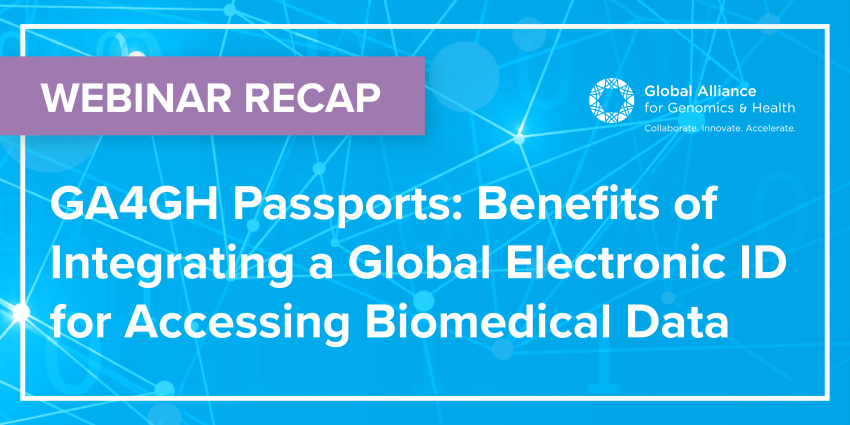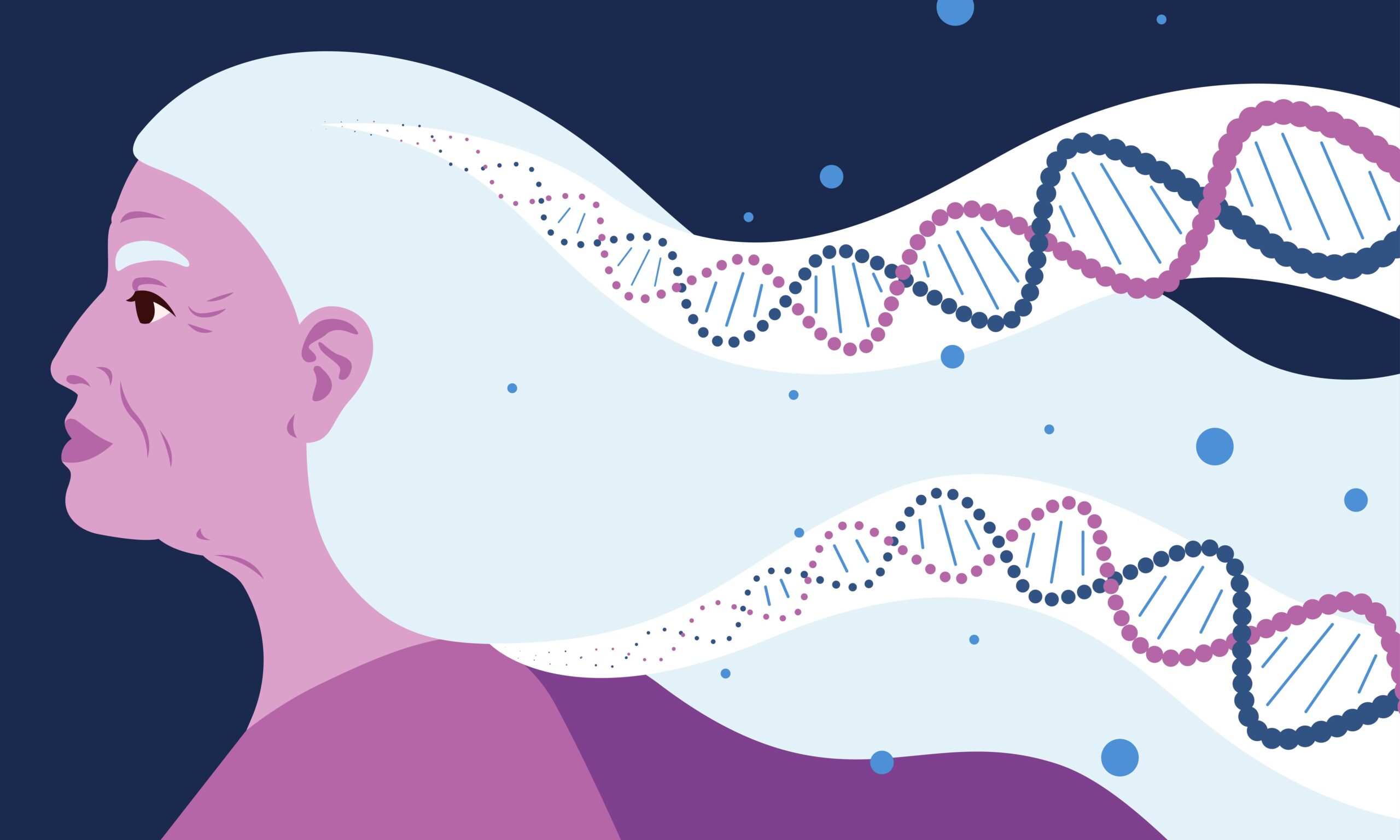About us
Learn how GA4GH helps expand responsible genomic data use to benefit human health.
Learn how GA4GH helps expand responsible genomic data use to benefit human health.
Our Strategic Road Map defines strategies, standards, and policy frameworks to support responsible global use of genomic and related health data.
Discover how a meeting of 50 leaders in genomics and medicine led to an alliance uniting more than 5,000 individuals and organisations to benefit human health.
GA4GH Inc. is a not-for-profit organisation that supports the global GA4GH community.
The GA4GH Council, consisting of the Executive Committee, Strategic Leadership Committee, and Product Steering Committee, guides our collaborative, globe-spanning alliance.
The Funders Forum brings together organisations that offer both financial support and strategic guidance.
The EDI Advisory Group responds to issues raised in the GA4GH community, finding equitable, inclusive ways to build products that benefit diverse groups.
Distributed across a number of Host Institutions, our staff team supports the mission and operations of GA4GH.
Curious who we are? Meet the people and organisations across six continents who make up GA4GH.
More than 500 organisations connected to genomics — in healthcare, research, patient advocacy, industry, and beyond — have signed onto the mission and vision of GA4GH as Organisational Members.
These core Organisational Members are genomic data initiatives that have committed resources to guide GA4GH work and pilot our products.
This subset of Organisational Members whose networks or infrastructure align with GA4GH priorities has made a long-term commitment to engaging with our community.
Local and national organisations assign experts to spend at least 30% of their time building GA4GH products.
Anyone working in genomics and related fields is invited to participate in our inclusive community by creating and using new products.
Wondering what GA4GH does? Learn how we find and overcome challenges to expanding responsible genomic data use for the benefit of human health.
Study Groups define needs. Participants survey the landscape of the genomics and health community and determine whether GA4GH can help.
Work Streams create products. Community members join together to develop technical standards, policy frameworks, and policy tools that overcome hurdles to international genomic data use.
GIF solves problems. Organisations in the forum pilot GA4GH products in real-world situations. Along the way, they troubleshoot products, suggest updates, and flag additional needs.
GIF Projects are community-led initiatives that put GA4GH products into practice in real-world scenarios.
The GIF AMA programme produces events and resources to address implementation questions and challenges.
NIF finds challenges and opportunities in genomics at a global scale. National programmes meet to share best practices, avoid incompatabilities, and help translate genomics into benefits for human health.
Communities of Interest find challenges and opportunities in areas such as rare disease, cancer, and infectious disease. Participants pinpoint real-world problems that would benefit from broad data use.
The Technical Alignment Subcommittee (TASC) supports harmonisation, interoperability, and technical alignment across GA4GH products.
Find out what’s happening with up to the minute meeting schedules for the GA4GH community.
See all our products — always free and open-source. Do you work on cloud genomics, data discovery, user access, data security or regulatory policy and ethics? Need to represent genomic, phenotypic, or clinical data? We’ve got a solution for you.
All GA4GH standards, frameworks, and tools follow the Product Development and Approval Process before being officially adopted.
Learn how other organisations have implemented GA4GH products to solve real-world problems.
Help us transform the future of genomic data use! See how GA4GH can benefit you — whether you’re using our products, writing our standards, subscribing to a newsletter, or more.
Join our community! Explore opportunities to participate in or lead GA4GH activities.
Help create new global standards and frameworks for responsible genomic data use.
Align your organisation with the GA4GH mission and vision.
Want to advance both your career and responsible genomic data sharing at the same time? See our open leadership opportunities.
Join our international team and help us advance genomic data use for the benefit of human health.
Discover current opportunities to engage with GA4GH. Share feedback on our products, apply for volunteer leadership roles, and contribute your expertise to shape the future of genomic data sharing.
Solve real problems by aligning your organisation with the world’s genomics standards. We offer software dvelopers both customisable and out-of-the-box solutions to help you get started.
Learn more about upcoming GA4GH events. See reports and recordings from our past events.
Speak directly to the global genomics and health community while supporting GA4GH strategy.
Be the first to hear about the latest GA4GH products, upcoming meetings, new initiatives, and more.
Questions? We would love to hear from you.
Read news, stories, and insights from the forefront of genomic and clinical data use.
Publishes regular briefs exploring laws and regulations, including data protection laws, that impact genomic and related health data sharing
Translates findings from studies on public attitudes towards genomic data sharing into short blog posts, with a particular focus on policy implications
Attend an upcoming GA4GH event, or view meeting reports from past events.
See new projects, updates, and calls for support from the Work Streams.
Read academic papers coauthored by GA4GH contributors.
Listen to our podcast OmicsXchange, featuring discussions from leaders in the world of genomics, health, and data sharing.
Check out our videos, then subscribe to our YouTube channel for more content.
View the latest GA4GH updates, Genomics and Health News, Implementation Notes, GDPR Briefs, and more.
22 Jun 2020
On Wednesday, June 17, the GA4GH Data Use and Researcher Identity (DURI) Work Stream hosted the webinar “GA4GH Passports: Benefits of Integrating a Global Electronic ID for Accessing Biomedical Data.”

On Wednesday, June 17, the GA4GH Data Use and Researcher Identity (DURI) Work Stream hosted the webinar “GA4GH Passports: Benefits of Integrating a Global Electronic ID for Accessing Biomedical Data.” More than 80 individuals tuned in to learn about GA4GH Passports, a standard for digitally representing researcher identities and permissions, which promotes consistency and scalability for the data access process. Craig Voisin of Google and Mikael Linden of ELIXIR—heads of the Passports development team—shared current data access challenges, use cases, and ways in which the Passports standard addresses the challenges faced in current data access ecosystems. Presentation slides and a recording of the webinar are available online.
Voisin began the webinar with an overview of the types of data access governing datasets today. Public access datasets are open to the world; anyone can discover or access these datasets. On the other side of the spectrum is controlled access, where datasets are under the strictest controls. Registered access lies between the two and offers a middle ground approach where individuals go through a vetting process, such as agreeing to ethics terms, to discover and access datasets.
Voisin and Linden discussed a series of challenges that currently exist in the data access process. These include:
To address these challenges, GA4GH Passports allows researchers to transport their identity and access qualifications between organizations and computing environments. The standard was built to be interoperable: different data controllers and hosts can understand the same “language” to authorize and enable access. GA4GH Passports aim to unify identities across systems and organizations, establish verifiable permissions, and streamline existing processes while improving security and regulatory compliance oversight.
Drilling down further, Voisin described how the Passport is composed of “visas,” which denote a researcher’s qualifications and permissions. These are securely collected from sources of truth, are verifiable, and time-limited. Some visas may also represent group or role membership—for example, what members belonging to a certain institution or organization are allowed to do with a dataset.
Next, Voisin and Linden dove into the three phases of the data access process—Discovery, the Data Access Compliance Office (DACO) process, and Data Access and Use—and specific challenges and opportunities with each step.
During the Discovery Phase, researchers may face challenges discovering potential datasets for their studies or determining if a dataset is worth applying for. Linden shared a potential light-weight solution using registered access Beacons, built upon the GA4GH Beacon specification. Once authorized and authenticated via their GA4GH Passport, researchers can query a Beacon Network to learn more information about the dataset.
In the DACO phase, researchers go through an approval process to gain access to the data. Information on the researcher and their particular study flows to the Data Access Committee (DAC), which evaluates the request. While much of the DACO process is manual, Voisin shared how Passports can help verify a researcher’s role and affiliation and securely transfer data access agreement sign-offs. This would allow DAC members to focus on whether the research is fit-for-use, ethically sound, reducing the burden of verifying inputs and approvals manually.
Once researchers are approved, they enter the Data Access and Use Phase. Voisin and Linden described two approaches to how researchers can now work with this data:
Voisin shared many benefits to bringing compute to data, including security improvements, overcoming jurisdictional challenges, cost and time savings, and the ability to use advanced tools at scale.
“By having more computing power and more datasets available globally , these advanced tools have the ability to offer higher quality analysis—enabling researchers to advance our understanding of human health and disease,” said Voisin.
Linden then described an example of bringing compute to data within ELIXIR. An authorization mechanism known as ELIXIR Authentication and Authorization Infrastructure (AAI) serves as the “passport broker” to provide information on datasets within the European Genome-Phenome Archive. Once a researcher has found and gained approval for a dataset, they can use their passport to access the cloud environment and run their analyses on the data.
Linden noted, “If you design a system that brings compute to the data, identity becomes the key—it’s the glue that holds together the home organization and affiliation of the researcher with the appropriate data access agreement and controlled access grant so that the access control can be enforced properly in the computing environment.”
Bringing all the pieces together, Voisin and Linden discussed how GA4GH Passports can be integrated into current data access ecosystems. These include wrapping existing permissions and attestations into the Passport visa format, adding a Passport Broker mechanism that can securely transfer visa information, and layering in a Passport control service to check access. The goal is data unification while leveraging existing infrastructure—a seamless way to access data across environments through a unified passport.
Lastly, the team presented current considerations and future directions for the GA4GH Passports standard, requesting feedback from the community. Melissa Konopko, who manages the DURI Work Stream, invited viewers to get involved with the development and implementation of Passports by accessing the GA4GH Passports Landing Page or reaching out directly.
To learn more about GA4GH Passports, view Part 2 of this webinar series—Implementing GA4GH Passports and AAI: Technical Deep Dive—where the team will delve into the technical details of implementing GA4GH Passports alongside the GA4GH AAI Specification.

